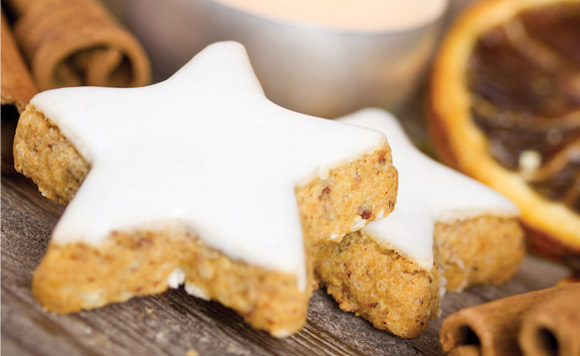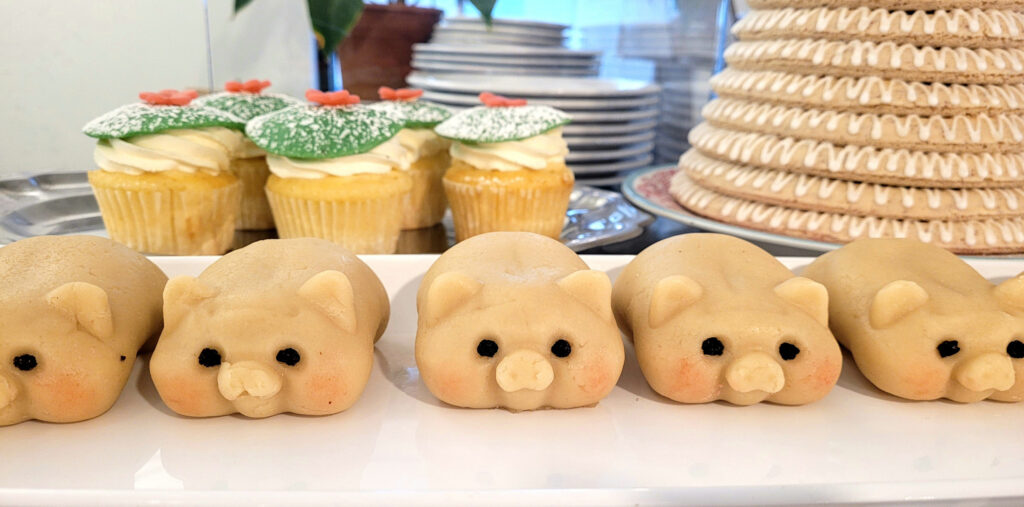– by Deborah Rogers –
For me, it isn’t Christmas unless I have an advent candle to light each night through the month of December. We always had one when I was growing up, and I’ve continued the tradition for my own children. Having the candle on the dinner table and burning down a number a day was the way that we chose to countdown to December 25th. My first Christmas in Canada (2007) my mum sent me a candle. It made me both happy and sad in that bittersweet way that homesickness does. The following year I searched high and low for my special candle, and eventually found myself at the Ladybug Boutique at Mattick’s Farm. Michael Pasch was happy to show me the German and Danish candles he imports each year, and I was happy knowing I would be able to continue a tradition from home in my new country.
Our Saanich Peninsula community is made up of people who have moved here from all over the world. Not everyone celebrates Christmas, but most cultures have a winter festival, and it has been a great pleasure finding out how some of our neighbours have found their own ways to honour where they come from whilst embracing where they are now.
Germany
Susi McMillan (lived in Canada since 2001)
Something I can’t do without at Christmas is an Advent Calendar on the first of December through to the 24th. On December 6th St. Nikolaus comes – you have to clean shoes on the night of the 5th and put them out. St. Nikolaus comes overnight and brings nuts, oranges, apples and chocolate. We have combined celebrations now, so on the 24th at night (the night where you open all presents in Germany) we open one gift and overnight Santa comes and brings the rest of the gifts. Calling home is my biggest gift. This year, I might Skype.
France
Christophe & Sophie Peschard (lived in Canada since 1999)
Our tradition is a raclette, which is melted cheese on cold cuts and potatoes. We usually do it on December 24th. The cheese is smuggled in every year by Sophie’s parents!
England & India
Randolph Otter (lived in Canada since 2012)
Being from an Anglo/Indian background my Christmas traditions are very ‘English’, right down to Christmas Cake, Christmas Pudding, tree, stocking, etc. In India, particularly Goa, Christian families will send ‘sweets’ to their neighbours at Christmas. The Muslim neighbours will return the compliment for Eid and the Hindu neighbours will return the compliment for Diwali. Our family’s sweets are always marzipan fruit (handmade by us), homemade coconut/almond fudge and a savoury thing called ‘Cul-Culs’ (also handmade). A Cul-Cul is made from flour dough which is rolled and flattened into the shape of a scroll and deep-fried. Unfortunately we do not observe the tradition in Canada (though this will be only our second Christmas here) but we do in Goa every year.
China
Henry Young (lived in Canada since 2001)
While enjoying Canadian culture, we also keep traditions from our homeland in celebration of Chinese New Year. We like Chinese meals; fish ball, dumpling and spring rolls are our favourite. Fish is a must as it is pronounced ‘Yu’ in Chinese pinyin and it means ‘Surplus’. We give our kids a red envelope on Chinese New Year’s Eve. In China, families get together to celebrate New Year, relatives and friends visit each other. However, for us, as our homeland is far away from here we normally call our relatives and friends by phone or through Skype. My family also participates in the Chinese New Year celebration events, such as Lion Dancing, held locally by Chinese communities. We usually buy Chinese foods in Fairway Market and sometimes special items from Chinatown stores.
Thailand
Kashane & Ratana Chalermwat (lived in Canada since 2010)
As part of the Thai community we celebrate the Songkran Festival which is the traditional Thai new year (April 13). We also celebrate The Loi Kathong festival (Full moon night in November). Most of the items we use are handmade.
Netherlands
Christel Alexander (lived in Canada since 1988)
Instead of celebrating Christmas our tradition was celebrating Sinterklaas. As a young child you knew it was getting closer when mandarin oranges appeared in the grocery stores. It would only be a matter of weeks before good old St. Nick would arrive on his steam ship (he doesn’t live in the North Pole but in a castle in Spain instead.) About two weeks before Sinterklaas has his Birthday celebration on December the 5th he arrives with his helper Piet and his good old white horse, which is magical and will ride on the roofs of the houses. Sinterklaas and Piet will deliver sweets and toys to all the boys and girls. Every night we would set our shoe by the fireplace for two weeks and in the morning there would be a treat in it (but only if you had been good, if you had been bad you would get a lump of coal!) Then came the grand finale, December 5th, the last day to set your shoe; you sang a few extra songs, made the best drawing ever, put your wish list in it again just in case he didn’t get your first one and went to bed listening if you could hear Sinterklaas’s horse land on your roof. The next morning you would get up and find gifts at your shoe. The special treats we ate were, spekulaas and pepernoten (spiced cookie), taai-taai (soft chewie cookie),gevulde spekulaas (soft spiced cookie filled with marzipan in it), banket bakkers staaf (marzipan with puffpastry around it), schuimpjes (a type of marshmallow), pure marzipan shapes and many different kinds of chocolates. Some of those treats you can find in grocery stores that carry Dutch products but if you want to buy the best you can find that at the Wooden Shoe Deli on Quadra street.
Russia
Tatiana Roesli-Komashko (lived in Canada since 1997)
In Russia, a fir tree is not decorated for Christmas, it is decorated for the New Year’s celebration. After the revolution in 1917 Christmas celebrations were abolished. The tradition to decorate a tree was revived in 1935 but it was dedicated to a different holiday, other Christmas traditions were similarly moved so that New Year is now celebrated like a western Christmas. Many yummy dishes are cooked for New Year’s Eve. Most traditional meals comprise meat and potato, but no family celebration in Russia is complete without Russian salad, dressed herring, tangerines and champagne. During the last few days of December every passerby will wish you ‘S Novim Godom!’ (Happy New Year!) And it is on this night that Ded Moroz (Grandfather Frost) and his granddaughter Snegurochka (the Snow Maiden) visit children to bring presents.




